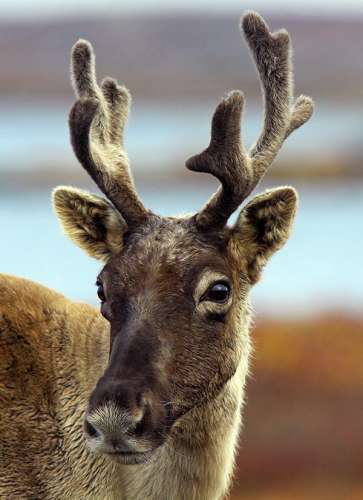Rangifer tarandus var. rudolphus, also known as the aerial caribou (or aerial reindeer in Europe) lives most of the year in more northern latitudes. However, its appearance in the United States in late December generates a great deal of excitement. Of all the world’s reindeer types, this animal is the least well documented. Efforts to study its migratory behaviors have been foiled by a combination of poor roof access and early bedtimes.
These cervids’ flight adaptations are little understood. Indeed, some sources suggest that they do not fly at all, but instead have developed skin flaps connecting their front and back legs, whereby when launching from a height with limbs extended they may glide for short distances. Proponents of the gliding reindeer hypothesis point to accounts of brief, roof-to-roof hops in urban areas.
Another flight explanation involves the common caribou winter diet of lichen, a composite organism of fungus and algae and/or cyanobacteria. The rocket hypothesis posits that aerial caribou feed in areas that contain an especially volatile form of lichen, which when combined with microbacteria in the rumen produces highly energetic, propulsive blasts of methane.
If the rocket hypothesis is correct, and these animals do attain high altitudes, they are likely to be well adapted to withstand frigid temperatures common in the upper atmosphere. All caribou have highly insulated coats, comprised of two hair layers. The surface layer features long, hollow guard hairs that trap air; an even denser underfur blocks heat loss from their skin. Unlike most cervids, caribou even have hair growing inside their ears, over the rhinarium (nose pad) and deep into the nostrils – adaptations that improve insulation, pre-warm air during inhalation, and help to prevent moisture loss.
Because of this extensive fur coverage, reports of aerial caribou having bare, lightbulb-like proboscises seem unreliable, or perhaps refer to an individual with an injury or genetic mutation. Red nasal color, if it exists, is most likely attributable to hair pigmentation, and may have a conspecific signaling purpose.
Caribou are generally sure footed, and there is no reason to think that aerial caribou would be an exception. A cervid that can race across river ice while pursued by wolves is unlikely to lose its balance on a standing seam roof, or the occasional solar panel.
Perhaps one the most surprising aspects of aerial caribou, at least as they appear in the United States, is their uniformly female gender. The animals are widely confirmed as bearing antlers in late December, and mature bull caribou have lost their antlers by this time. Perhaps these all female herds are scouting future calving grounds, or have been attracted by baiting, for example by gingerbread cookies with sprinkles.
While you’re unlikely to see R.t. var. rudolphus, look for tracks on rooftops and ledges – the semicircle shaped hoof marks are noticeably different than those of moose, and large dew claw marks are distinctly visible. Winter scat tends to look like piles of over-sized coffee beans, sometimes with a little sparkle. Also listen for their call - a repeated snorting, sometimes described as a jingle, typically heard after 9 p.m.



Discussion *